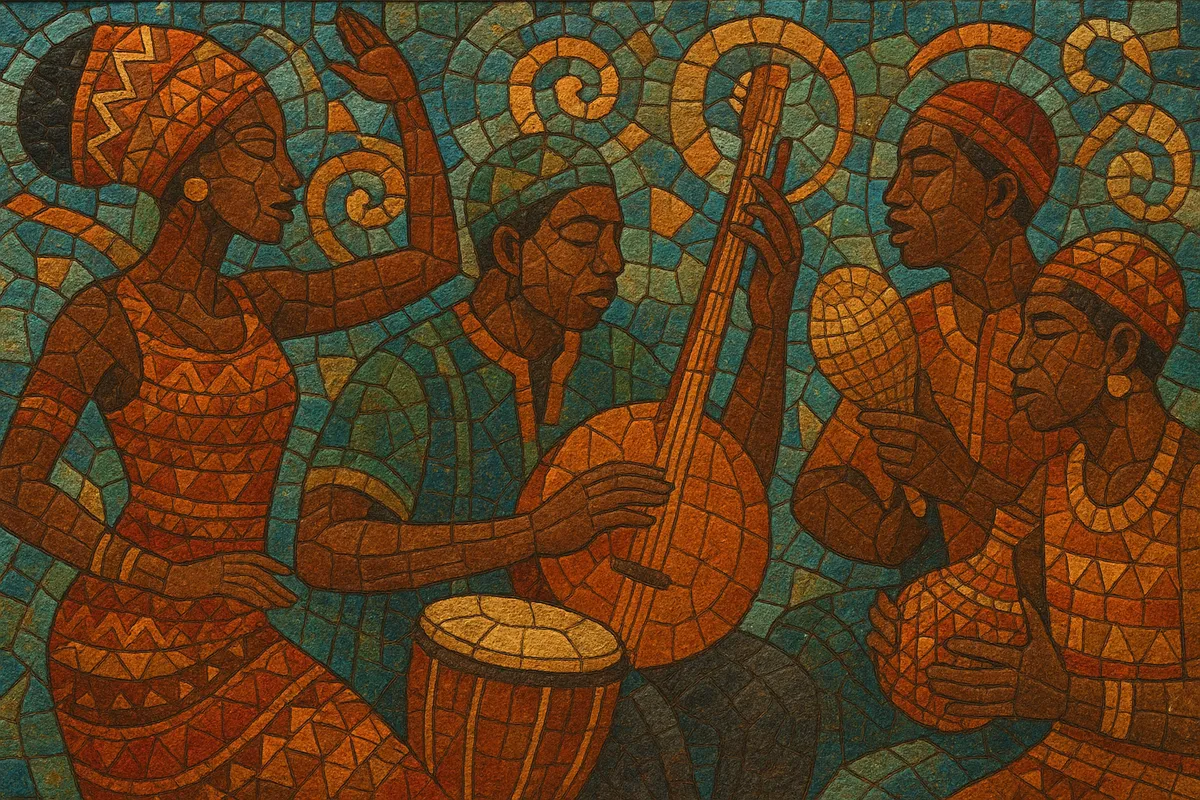African music is a broad, pan‑continental umbrella that encompasses thousands of local traditions, court and ritual musics, and modern popular styles from across Africa. It is characterized by layered polyrhythms, cyclical forms, call‑and‑response vocals, timeline bells, and a participatory performance ethos where dance and music are inseparable.
While rooted in ancient indigenous practices, the modern category of “African music” took shape in the recording era as regional styles such as highlife, jùjú, Congolese rumba/soukous, and Afrobeat spread beyond their homelands. Over time, electric instruments, brass sections, and later drum machines and DAWs were integrated, producing contemporary scenes like kwaito, Afrobeats, and amapiano.
Across the continent, core sonic features include interlocking ostinatos, off‑beat phrasing, and groove‑centric vamps rather than heavy functional harmony. Timbres range from resonant harps and lutes (kora, ngoni) and wooden idiophones (mbira, balafon) to talking drums and hand percussion (djembe, dunun, shekere), with strong regional variation in scales, tunings, and vocal techniques.
African musical traditions predate written history and developed in close relation to language, dance, ritual, and community life. Court ensembles, praise‑singing griot/jeli lineages in the Mande world, mbira ceremonies in Southern Africa, and complex drum orchestras in West and Central Africa exemplify a long continuity of practice. Across the Sahel and North Africa, Islamic recitation and Arab‑Andalusian currents shaped modal systems, instruments, and vocal aesthetics.
With colonial urbanization and port cities came new musical exchanges. Early 20th‑century recordings captured local repertoires and fostered hybrid urban genres. In Ghana and Nigeria, highlife blended brass band, palm‑wine guitar, and Afro‑Caribbean influences. In Congo (DRC), Cuban son and local rhythms converged into Congolese rumba (later soukous). In Nigeria, jùjú evolved around Yoruba percussion and guitars; in Senegal, roots of future mbalax coalesced in urban dance bands.
Post‑independence optimism drove an explosion of innovation. State bands and cosmopolitan capitals amplified regional scenes. Fela Kuti, synthesizing highlife, jazz, and Yoruba rhythm, pioneered Afrobeat—politically charged, groove‑driven big‑band music. In Ethiopia, Ethio‑jazz emerged via modal scales and jazz harmony. Across Southern Africa, township jazz and mbaqanga flourished despite apartheid. Recording infrastructure and radio networks helped circulate these styles continent‑wide.
Digital production and diaspora networks accelerated cross‑pollination. South Africa birthed kwaito, gqom, and amapiano; Nigeria and Ghana seeded Afrobeats as a pan‑African pop lingua franca; Congo’s ndombolo updated soukous for modern dance floors; Senegalese mbalax and Cameroonian makossa reached international audiences. Today, African music is embedded in global pop, dance, and hip‑hop, while traditional ensembles and ceremonial musics remain vital, often collaborating with contemporary artists to sustain lineages and innovate.


